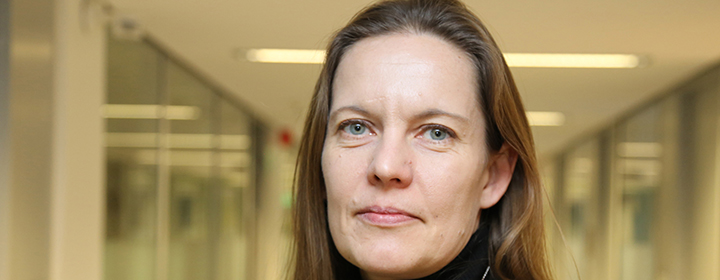
Laura Forsström: Invisible female scientists
Are success rates and successful funding applications appropriate measures of equality in science? Perceptions that maintain the gender gap are deeply rooted. The coronavirus pandemic has further highlighted the unequal distribution of household and care responsibilities between women and men.
“Hey girl! Pass the milk, would you?” I was 24 years old and in my first proper job after university. I had been in the team – a small one – for more than six months at this point, but still there was this older male colleague who thought that it was fine to just call me “girl” in the staff break room. Young men who had joined the team after me were called by their names, but I was simply “one of the girls”.
The Academy of Finland has made a commitment to gender equality and non-discrimination. Both the Academy and other funding agencies publish statistics on the numbers of male and female applicants and on success rates by gender. Equality is also one of the Academy’s guiding values. But is splitting the amount of funding equally between men and women true equality? And why does this only happen with Postdoctoral Researchers while, for example, only three of the 10 new Academy Professors are women and only 29% of the second-stage applicants were female?
Acatiimi, a magazine published by The Finnish Union of University Researchers and Teachers, The Union for University Teachers and Researchers in Finland, and The Finnish Union of University Professors, estimated in 2019 that 58% of all university degrees and 51% of doctorates are awarded to women. Yet around 70% of professors are men.
Perceptions that maintain the gender gap are deeply rooted
Women not only get fewer of the most esteemed professorships but often also less visibility. All-male panels have become less common in recent years thanks to the negative attention they have received, but there are still plenty of opportunities for male chauvinism to rear its head.
For example, the Academy of Finland’s website included a section about Academy Professors in early 2020, which included five interviews from 2017─2019. All the featured interviewees were men even though female professors had also been interviewed during the years in question. This was a simple oversight to fix, but other similar unintentional biases could easily be missed, helping to reinforce preconceptions such as that professors are usually men.
The invisibility of female scientists also extends to publishing: several studies have shown that academic papers published by women get fewer citations than those written by men and that research assumed to have been conducted by men is given more scientific merit. British author and journalist Caroline Criado-Perez writes in her book Invisible Women that recommendation letters written for female scientists emphasise their social skills (warm, considerate, kind) while men’s personal traits are described in active terms (ambitious, confident). Have a guess at which set of adjectives appeals more to prospective employers.
COVID-19 has highlighted the unequal distribution of household and care responsibilities between women and men
Numerous studies also show that women’s careers are held back by the unequal distribution of care responsibilities. Women perform 75% of unpaid care work globally, dedicating between three and six hours to it every day.
The coronavirus pandemic has highlighted the unequal distribution of labour between women and men, and the effects have been noted by the editorial boards of several scientific publications: in some sectors, the number of scientific articles put forward by female authors between January and April 2020 was down by as much as 50% on previous years. The issue has also been a hot topic on social media, where countless female scientists have talked about how their increased household and parenting responsibilities have made it practically impossible to focus on research.
Overcoming these kinds of flaws in the system and finding ways to compensate for the damage done to careers by, for example, the unequal effects of the coronavirus pandemic will be a big task for research funding agencies in the coming years. We can all start by treating our colleagues equally and fairly.